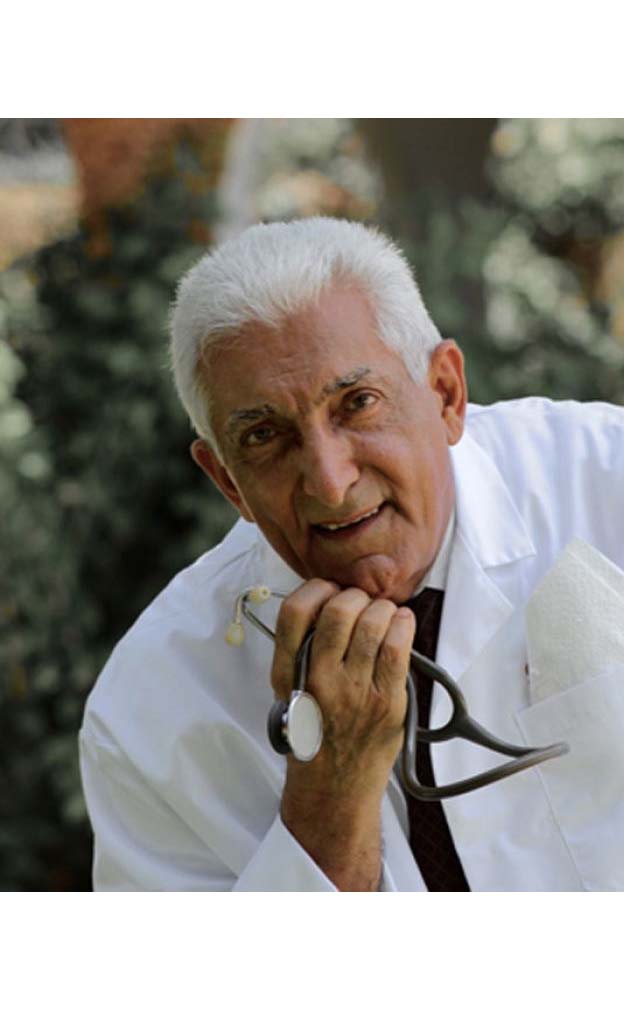
Overall,
the most common symptoms include:
Shortness
of breath with activity, a Persistent, cough, Coughing up blood, unexplained
Weight loss, Chest pain and death
What
Is Lung Cancer?
Lung
cancer originates in the tissues of the lungs or the cells lining the airways
(the bronchi). These cells begin as and look like lung cancer cells under the
microscope, with the exception of changes that occur in the process of becoming
cancerous.
If
lung cancer spreads to other regions of the body, the cells are still lung
cancer cells. For example, if lung cancer spreads to the brain, cells taken
from the metastasis (growth) in the brain would be identifiable as cancerous
lung cancer cells under the microscope. In contrast, some tumours begin in
other parts of the body and spread (metastasize) to the lungs.
This
is referred to as metastatic cancer to the lungs and not lung cancer. An
example would be a breast cancer which spreads to the lungs. This would not be
called lung cancer, but rather “breast cancer metastatic to the lungs.”
Lung
cancer is the leading cause of cancer deaths worldwide, with 1.8 million new
cases being diagnosed yearly.
It is also the most fatal cancer in men,
killing more men than prostate cancer, pancreatic cancer, and colon cancer
combined. Overall, 27 percent of cancer deaths in the U.S. are due to lung
cancer.
Before
anyone dismisses these numbers as due to smoking alone, it’s important to point
out that even if smoking were banned today, we would still have lung cancer.
Lung cancer in never-smokers is the sixth leading cause of cancer deaths in the
United States. In fact, the focus on smoking cessation as a way to treat lung
cancer has, in some ways, overshadowed research looking into other causes.
How
Does Lung Cancer Begin?
Lung
cancer usually begins several years before it causes symptoms and is diagnosed.
Cells in the lungs may become cancer cells after going through a series of
mutations which transform them into cancer cells. Gene mutations - or changes in
the DNA of the cells - may be inherited (as a hereditary predisposition) or
acquired (damaged as the result of exposure to carcinogens (cancer-causing
substances) in the environment. This accumulation of mutations is one of the
reasons for a common finding with lung cancer: Many people develop lung cancer
though they have never smoked, and some people smoke their whole life and never
develop lung cancer.
Lung
cancer begins - a tumour originates - when a mass of cancer cells becomes immortal in
a way; cells dividing and multiplying out of control. Our normal cells are
regulated by a series of checks and balances.
Who
Gets Lung Cancer
The
average age for lung cancer is 70, and 80 percent of people who develop lung
cancer have smoked, but:
Lung
cancer occurs in non-smokers - And while
lung cancer in men who have smoked is decreasing, lung cancer in non-smokers is
increasing. It’s estimated that 20 percent of women who develop lung cancer in
the U.S. have never smoked, and that number increases to 50 percent worldwide.
Lung
cancer occurs in young adults - It’s estimated that 13.4 percent of lung
cancers occur in adults under the age of 40. While this number may seem small,
when compared to the incidence of lung cancer overall, it is not. Calculating
this out, around 21,000 young adults will die from lung cancer this year (again
comparing this to 40,450 breast cancer deaths for women of all ages.) In
addition, women are more likely than men to develop lung cancer at a young age,
and lung cancer in young adults is increasing.
Types
of Lung Cancer
There
are two primary types of lung cancer:
Non-small
cell lung cancer is most common, being responsible for 80 to 85 percent of
cancers. This is the type of lung cancer
more commonly found in non-smokers, women, and young adults.
Small
cell lung cancer is responsible for around 15 percent of lung cancers. These
lung cancers tend to be aggressive and may not be found until they have already
spread (especially to the brain). They usually respond fairly well to
chemotherapy but have a poor prognosis.
Non-small
cell lung cancer is further broken down into three types:
Lung
adenocarcinoma - Lung adenocarcinoma is responsible for half of non-small cell
lung cancers and is currently the most common type of lung cancer. It is also
the most common type of lung cancer found in women, young adults, and in people
who do not smoke.
Squamous
cell carcinoma of the lungs - Squamous cell lung cancer was once the most
common type of lung cancer, but its incidence has decreased in recent years.
Part of the thought is that the addition of filters to cigarettes created this
shift. Squamous cell cancers tend to occur in or near the large airways - the
first place exposed to smoke from a cigarette. Lung adenocarcinomas, in contrast,
are usually found deeper in the lungs, where smoke from a filtered cigarette
would settle.
Large
cell lung cancer - Large cell carcinomas of the lungs tend to grow in the outer
regions of the lungs. These are usually rapidly growing tumors that spread
quickly.
Other,
less common types of lung cancer include carcinoid tumours and neuroendocrine
tumours.
Signs
and Symptoms of Lung Cancer
Having
an awareness of the early signs and symptoms of lung cancer is a must for
everyone for two reasons:
There
is not a screening test available for everyone, so the only way that most
people have to find these cancers early—when
they are most treatable—is knowing the signs. Recent research tells us
that the majority of people in the United States are not familiar with these
symptoms.
Because
lung cancer is common. As noted earlier, lung cancer is the leading cause of
death in both men and women and anyone who has lungs is at risk.
Overall,
the most common symptoms include:
shortness
of breath with activity
a
persistent cough
coughing
up blood
unexplained
weight loss
chest
pain
Of
note is that the types of lung cancer have been changing over the years, and
with that, the most common symptoms. In the past, lung cancers such as squamous
cell carcinoma and small cell lung cancer were most common. These cancers tend
to grow near the large airways of the lungs and cause symptoms early
on - commonly a cough and coughing up blood. Now, lung adenocarcinoma, a tumor
which tends to grow in the outer regions of the lungs is most common. These
cancers tend to grow for a long time before causing symptoms, which may include
mild shortness of breath, subtle weight loss, and a general sense of being
unwell.
Diagnosis
and Staging
A
combination of imaging studies, including CT, MRI, and PET scans may be used to
diagnose lung cancer. In addition, a lung biopsy is usually needed to determine
the type of lung cancer.
Careful
staging - figuring out how extensive a lung cancer is - is important in designing a
treatment regimen. Non-small cell lung cancer is broken down into five stages:
stage 0 to stage IV. Small cell lung cancer is broken down into only two
stages: limited stage and extensive stage.
How
Does Lung Cancer Grow and Spread
One
of the differences between benign lung tumours and lung cancer, as noted, is
that lung cancer cells have the ability to break off and spread to other
regions of the body. This spread, in fact, is the cause of most cancer deaths.
One of the differences between cancer cells and normal cells is that cancer
cells lack “stickiness.” Normal cells produce substances that cause them to
stay together. Without this stickiness, lung cancer cells can travel and grow
in other regions, as well as invade nearby structures.
There
are four primary ways in which lung cancers spread. It can “invade” tissues
locally. Unlike benign tumours which may push up against nearby tissues,
cancers actually penetrate nearby tissues. This is the reason for the name
“cancer,” which is derived from the word crab; cancer can send crablike
extensions into nearby tissues.
Lung
cancer cells can also break away and spread through either the bloodstream or
the lymphatic system to distant sites. In recent years, it’s also been found
that lung cancer may travel and spread through the airways in the lungs.
Lung
Cancer Treatments
Treatment
options for lung cancer have improved significantly in recent years. These
include:
Surgery
- There are several types of lung cancer surgery which may be done, depending
on the size and location of a tumor.
Radiation
therapy - Radiation therapy may be given as an adjunct to surgery, to decrease
pain or airway obstruction due to a cancer, or in high doses to a localized
region in an attempt to cure cancer (stereotactic body radiotherapy.)
Chemotherapy
- Chemotherapy usually uses a combination of medications to treat lung cancer.
Targeted
therapies - Everyone with lung cancer should have molecular profiling (gene
testing) done on their tumors. Targeted therapy drugs are currently available
for people who bear tumours with several genetic mutations including EGFR
mutations, ALK rearrangements, and ROS1 rearrangements. Contact your oncologist
for an updated list of mutations.
Immunotherapy
- In 2015, two immunotherapy drugs were approved for the treatment of lung
cancer. In some cases, these drugs have resulted in long-term survival even for
those with the advanced stages of lung cancer.
A
relatively new type of cancer care is termed palliative care. Palliative care
is care designed to address the full spectrum of medical needs for people with
cancer, including physical, emotional, and spiritual support. Unlike hospice
care, palliative care can be used for anyone, even if you have a cancer which
is considered curable. Early studies have found that, in addition to improving
the quality of life for people, this care may also improve survival.
Where
in the Gambia
For
information, diagnose and treatments At EFSTH, MRC, number of NGO and Private
Clinics. Also France De Gaulle Njie Foundation Web site, Email to
azadehhassan@yahoo.co.uk, send text only to Dr Azadeh 002207774469/3774469.
Author:
DR AZADEH Senior Lecturer at the University of the Gambia, senior Consultant in
Obstetrics & Gynaecology, Clinical Director at Medicare Health Services.



